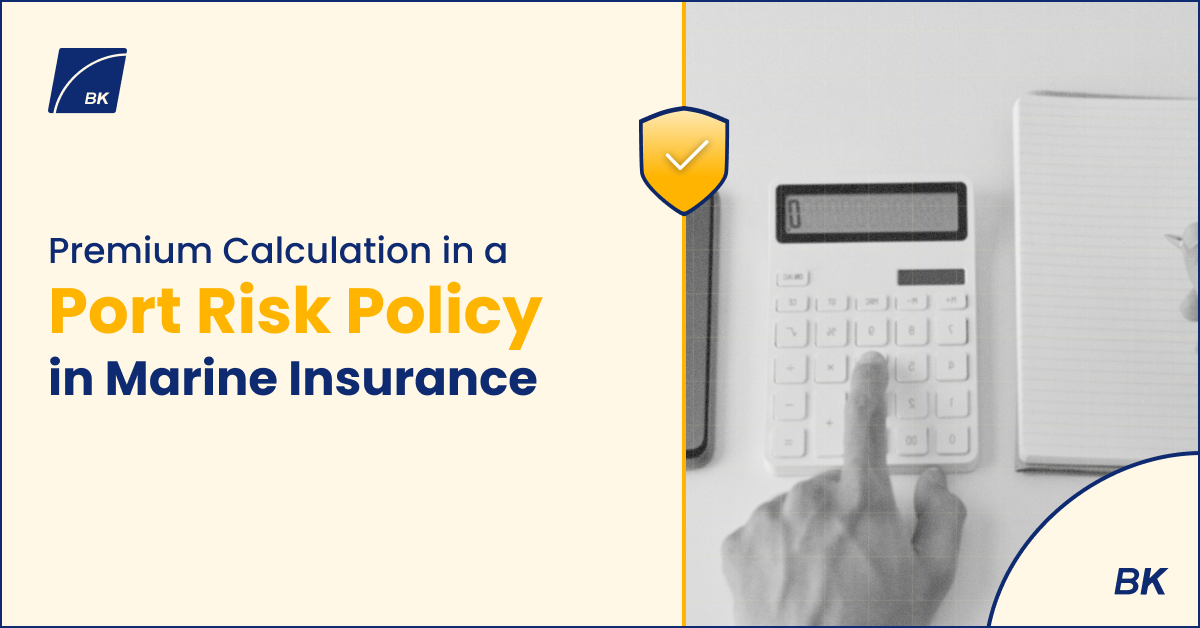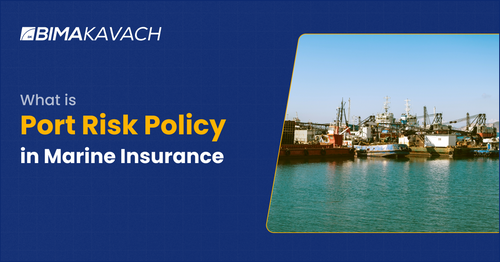One of the most significant risks that shipowners face is port risk. In this regard, the port risk policy in marine insurance is designed to provide coverage for these types of risks. A port risk policy is an essential component of marine insurance as it covers a broad range of risks that can occur while a ship is in port. These risks can result in significant financial losses for shipowners, making it imperative to have adequate insurance coverage.
Understanding Port Risk Policy in Marine Insurance
A Port Risk Policy in marine insurance provides coverage for risks associated with a vessel while it is in a port or harbour. It protects the vessel, cargo, and crew from losses or damages that may arise during the loading, unloading, or storage of cargo at the port. This type of insurance is particularly relevant during the time when a ship is berthed or anchored in a port, and it covers a range of risks that may occur during this stationary phase of the maritime journey. The scope of coverage for a port risk policy includes physical loss or damage to the vessel, cargo, and third-party property, as well as liabilities arising from bodily injury, property damage, and pollution.
Get Free Quote in Minutes
Key Features & coverages in Port Risk Policy
A Port Risk Policy in marine insurance covers a range of risks that may occur during this stationary phase of the maritime journey. Some of the key features and coverages in this policy may include:
· Perils of the Sea: Coverage for perils such as storms, collisions, or other marine-related risks that may occur while the vessel is in port.
· Fire and Explosion: Protection against fire or explosion risks that could damage the vessel while it is at the port.
· Theft and Pilferage: Coverage for theft or pilferage of cargo or equipment from the vessel while it is at the port.
· Collision: Protection against collisions with other vessels, piers, or structures within the port.
· Stranding: Coverage for damages resulting from the vessel running aground or stranding in the port.
· General Average: Reimbursement for losses incurred due to a general average event where sacrifices are made for the common safety of the ship and cargo.
· Customs Duty: Some policies may include coverage for customs duty that may be incurred while the vessel is in port.
It's important to note that the specific terms and conditions of a port risk policy can vary among insurers, and the coverage may be tailored to the needs of the insured. Port risk policies are often part of a broader marine insurance program, and they complement other coverages such as hull and machinery insurance and cargo Insurance. Businesses engaged in maritime activities, shipowners, and operators may opt for port risk policies to mitigate the financial impact of risks specific to the port environment.
Assessment & Management of Port Risk
· Risk Identification
The first step in the risk assessment and management process is to identify potential risks associated with the port. This involves a thorough analysis of the port's location, infrastructure, and operations. It is important to consider all possible risks, including natural disasters, human error, and intentional acts of sabotage.
To aid in the identification of risks, port operators may use risk assessment tools such as checklists or hazard analysis. These tools can help to identify potential risks and prioritize risk mitigation efforts.
· Risk Evaluation
Once potential risks have been identified, the next step is to evaluate the likelihood and potential impact of each risk. This involves a quantitative analysis of the probability of the risk occurring and the potential consequences if it does.
Risk evaluation may involve the use of risk matrices or other risk assessment tools. These tools can help to prioritize risk mitigation efforts and allocate resources accordingly. It is important to note that risk evaluation is an ongoing process. As new risks emerge or existing risks change, the risk assessment and management plan must be updated accordingly.
Overall, effective risk assessment and management are crucial for ensuring the safety and security of ports and the vessels that use them. By identifying and evaluating potential risks, port operators can take proactive steps to mitigate those risks and protect against potential losses.

Premium Calculation in a Port Risk Policy in Marine Insurance
Marine insurance companies use various factors to calculate the premium for port risk policies. These factors include the type of cargo, the value of the cargo, the voyage route, the ship's age and condition, and the level of risk associated with the port.
The type of cargo and its value are significant factors that influence the premium calculation. For example, high-value cargo such as electronics or jewellery will attract a higher premium than low-value cargo such as grains or coal. The voyage route is also a crucial factor, as some routes are considered riskier than others. For instance, voyages through pirate-infested waters or areas with high geopolitical tensions will attract a higher premium.
The age and condition of the ship also affect the premium calculation. Older vessels or those with a history of accidents or defects will attract a higher premium. The level of risk associated with the port is another critical factor. Ports located in areas with high crime rates or political instability will attract a higher premium.
Premium Adjustment Mechanisms
Marine insurance companies use various premium adjustment mechanisms to ensure that the premium accurately reflects the risk involved. These mechanisms include deductibles, excesses, and limits. Deductibles are a fixed amount that the policyholder must pay before the insurance company pays out for a claim. Excesses are a percentage of the claim amount that the policyholder must pay. Limits are the maximum amount that the insurance company will pay out for a claim.
Claims Handling and Settlement in Port Risk Policy
- Notification of Loss
In the event of a loss, the insured must notify the insurer as soon as possible. The notification should include all relevant details, such as the nature and extent of the damage, the location of the incident, and the estimated cost of repairs. Failure to provide timely notification may result in the insurer denying the claim.
2. Assessment of Damages
Once notified, the insurer will appoint a surveyor to assess the damages. The surveyor will investigate the cause of the loss, the extent of the damage, and the cost of repairs. The surveyor's report will form the basis of the insurer's decision on the claim.
If the insurer accepts the claim, it will settle the claim in accordance with the terms of the policy. This may involve repairing or replacing the damaged property, or paying the insured the cost of the repairs. If the insurer disputes the claim, it may require further investigation or seek legal advice.
The insured needs to cooperate fully with the insurer during the claims-handling process. This includes providing all necessary information and documentation and allowing access to the damaged property for inspection. Failure to cooperate may result in the insurer denying the claim.
Frequently Asked Questions
1. How does a valued policy function in the context of marine insurance?
A valued policy is a type of marine insurance policy that sets a predetermined value for the insured property, usually the vessel or cargo. In the event of a total loss, the insured will receive the predetermined value, regardless of the actual value of the property at the time of the loss. Valued policies are common in marine insurance because the value of the property can be difficult to determine accurately.
2. In what scenarios is a port of distress claim applicable?
A port of distress claim is applicable when a vessel is forced to seek refuge in a port due to an unforeseen event, such as bad weather or mechanical failure. The costs associated with the stay in the port, including repairs, provisions, and crew wages, may be covered by the port of distress clause in the marine insurance policy.
3. What are the key differences between voyage and composite policies in marine insurance?
A voyage policy is a marine insurance policy that covers a specific voyage or journey, while a composite policy covers multiple voyages or journeys within a specified period. Voyage policies are typically more expensive than composite policies because they offer more comprehensive coverage for a single voyage. Composite policies are more flexible and cost-effective for ship owners who make frequent voyages.
4. How is jettison covered under marine insurance policies?
Jettison is the act of throwing cargo overboard to lighten a vessel in an emergency. Jettison is covered under marine insurance policies as a general average loss. The cost of the lost cargo is shared by all parties who have an interest in the voyage, including the ship owner, cargo owners, and insurers.
Read more liability in marine insurance
Read more classes of marine insurance

